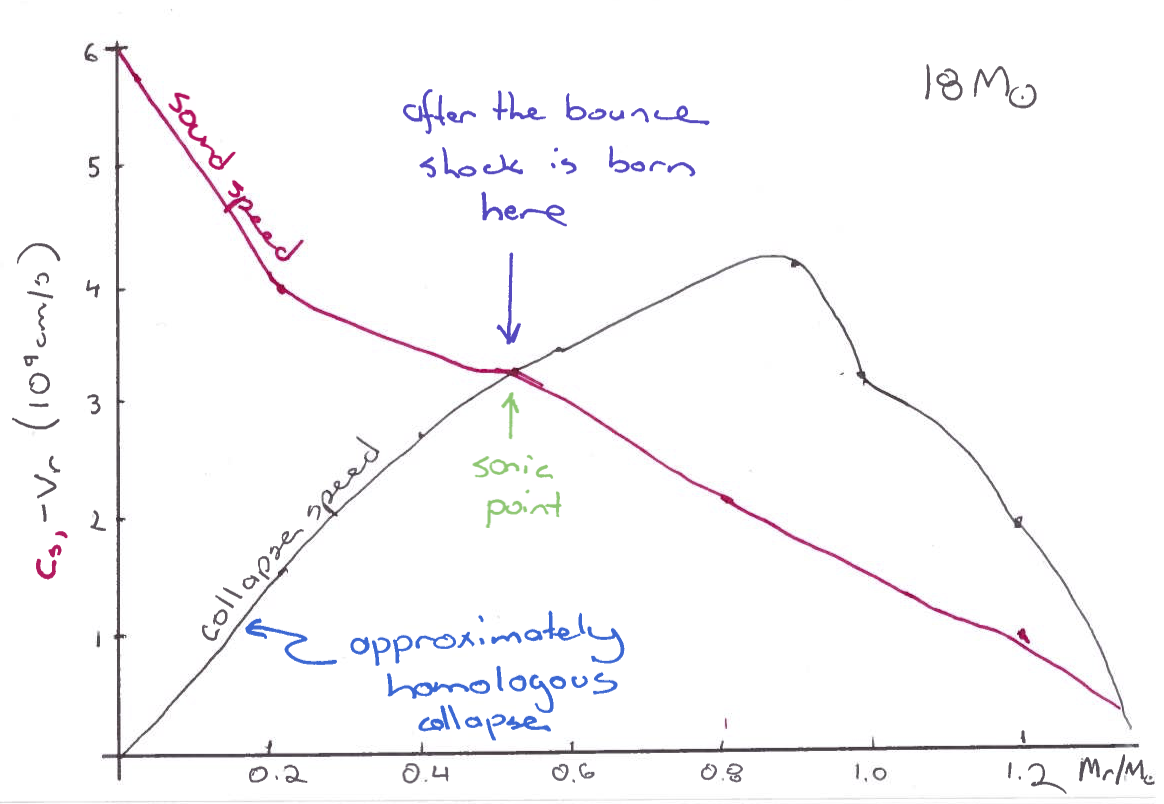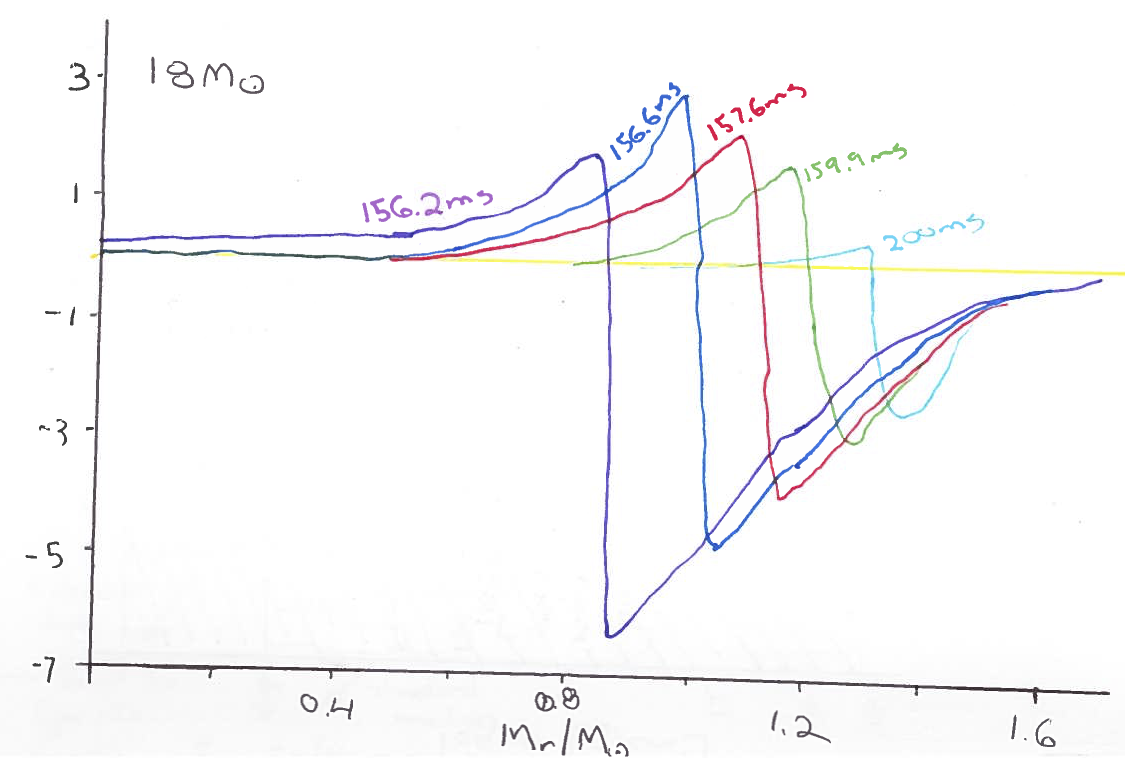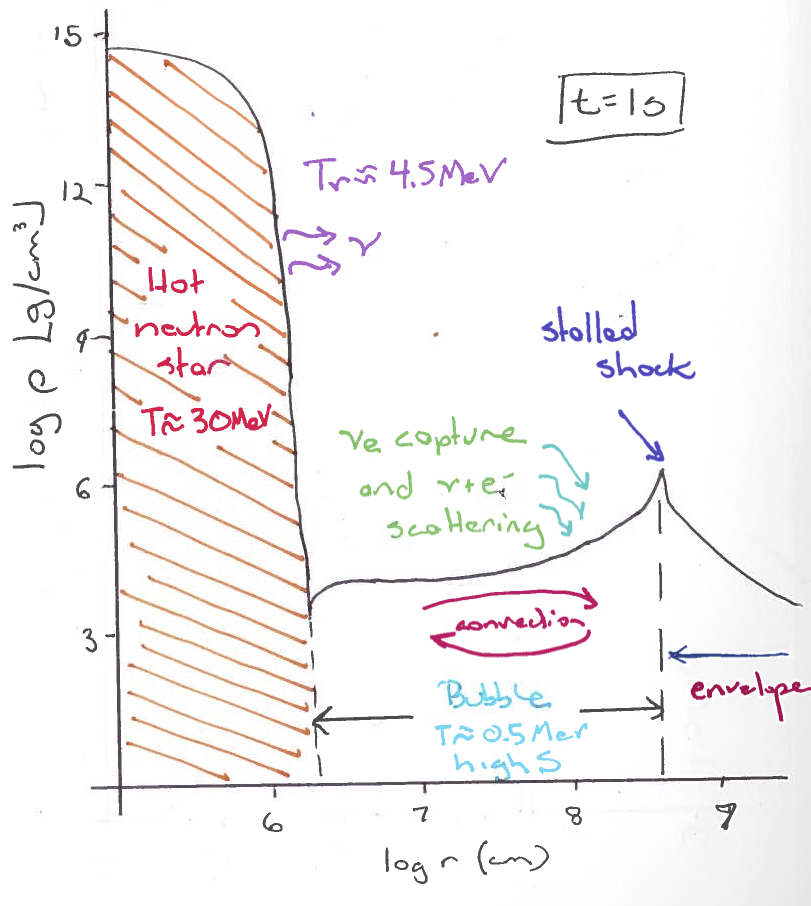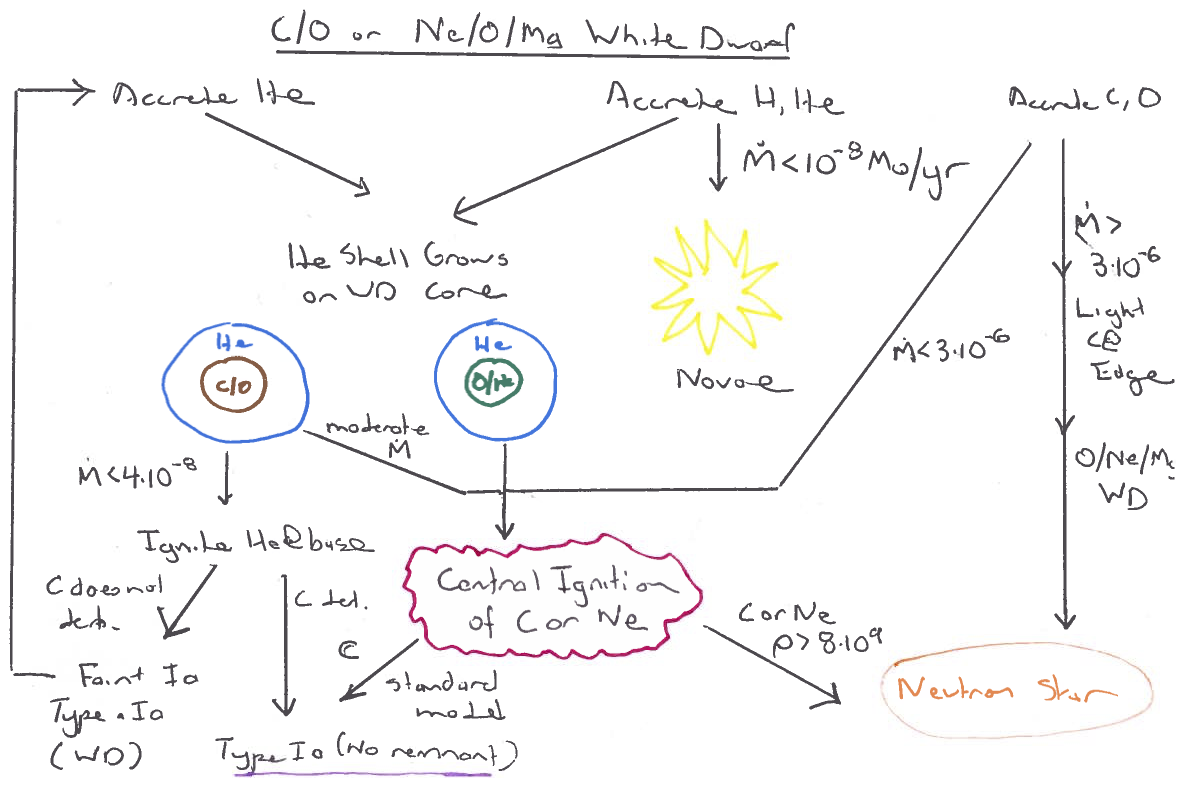Template:ASTR508/Supernovae
Supernovae
Reading Assignment
- Chapters 12 and 13 from Jim Lattimer's notes
- The evolution and explosion of massive stars, Sec V. to X.
- Type Ia Supernova Explosion Models
Core-Collapse
Thermonuclear
Assignment
For your assignment I would like you to focus on the following two inlists:
- wd_c_core_ignition (only about 3 minutes to run),
- split_burn_big_net_30M (only about 8 minutes to run).
For both runs I want you to add the dynamic timescale and the nuclear timescale to the history file. For the wd_c_core_ignition run only, I want you to add the various non-nuclear neutrino processes to the profile file.
Now how do you do this? In each of the directories you will have to edit files called history_columns.list and profile_columns.list. The wd_c_core_ignition by default only gives a few profiles. We want more so change profile_interval to 10 from 50 in the inlist file. You will have to make a few changes to split_burn_big_net_30M to get it to run to collapse. Hint: look at the stopping conditions.
For all of the plots I would like for you to use the enclosed mass as the abscissa.
For the the wd_c_core_ignition run,
- I would like for you to plot the neutrino losses through the star for the final profile for each of the processes.
- I would also like you to plot the various nuclear reaction rates for both the final profile and the second to last profile.
- Which nuclear reaction do you think is driving the instability? Are you surprised?
For the split_burn_big_net_30M I would like you to plot the various nuclear reaction rates, the composition and the specific entropy of the material as a function of the enclosed mass for the initial profile, one in the middle and the final profile.
- How much time has elapsed between the beginning of silicon burning and the collapse of the core? To get the core to collapse, you will probably have to change the inlist. Right now, it will stop after only a few models.
- Do you notice a mass at which the specific entropy abruptly rises near the centre? What is the significance of this mass?
- Can you infer from the specific entropy curve what is happening in the different regions? Hint: compare it with the nuclear burning profiles.




